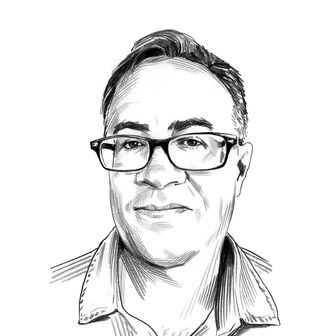
“Protocol” is the most exciting episode of Homecoming so far, full of suspense and emotion and big-time payoffs to a carefully orchestrated story. But let’s start off with a complaint here.
As noted many times in these recaps — and any other review of the show you’ll come across — Homecoming pays homage to many films and directors past, with a particular focus on the post-Watergate paranoid thrillers of the 1970s. The best of these thrillers is The Conversation, the film Francis Ford Coppola made between the first two Godfather movies, and in my view, the best of his career. (In fact, I made it official in my Coppola rankings for this very publication.) The Conversation is about Harry Caul (Gene Hackman), a private surveillance expert who starts to question his clients’ motives for using his recordings, which leads him to uncover a devastating political conspiracy. David Shire’s unforgettable piano score is key to the film’s impact, underscoring our hero’s isolation and disillusionment in the face of overwhelming tyranny.
Homecoming director Sam Esmail uses big chunks of that score in “Protocol,” starting with the scene where a shaken Heidi, having just learned the true purpose of the Homecoming program, tries to give her spiel to the new recruits. It comes up again in the final stretch, when Heidi breaks down completely in both timelines, sick with her complicity in evil. The connections between The Conversation and Homecoming are strong: Like Harry Caul, Heidi spent a long time doing her part of a job while remaining deliberately ignorant about her employers’ motives. And like Harry Caul, Heidi is left broken by the awful truth. But to use that score feels like a hijacking, like Esmail is glomming on to the emotions that Coppola earned. My response to the score is Pavlovian, and I’m guessing that’s true of anyone who loves the film as much as I do.
Yet “Protocol,” in all other respects, is the series at its best, elegantly fusing the tension that’s been building up on both timelines. And part of its effectiveness is that 90 percent of it sticks to only one timeline, five years later, when Heidi and Colin head down to Tampa to investigate the address on the stolen envelope and Thomas follows closely on their tail. The adjacent-building-with-the-same-layout twist feels like a cheat, since no such building had been established before, and it seemed to suggest some timeline-related twist that never materializes. (And would make no sense, but the mind drifts sometimes.) Yet having Colin and Heidi explore a Wellness Center while Thomas sifts through the ghosted remains of the old Homecoming facility opens up some artful crosscutting — and plenty of suspense about when and how these subplots will converge.
The Homecoming building always seemed like a pop-up operation, hastily established and just as easily left behind. (To quote Robert De Niro’s master thief in Heat: “Don’t let yourself get attached to anything you are not willing to walk out on in 30 seconds flat if you feel the heat around the corner.”) For that space to be reimagined as a wellness facility seems apropos: That’s what it was used for before, in a way — to assist people in getting healthier. It doesn’t turn out to be the same building, of course, but something like the faux-Mexican food truck in the cafeteria has a wonderful fly-by-night quality, something artificial and impermanent.
On Thomas’s end, smashing his way through the door on a hunch over his boss’s objections is an essential act of personal and professional dignity. He’s the self-admitted “cog,” the bureaucrat, the guy who has the power to suggest that a case get investigated but not the confidence from above that he could do the investigation himself. He wills himself past a bad conversation with his boss, past a fall down the stairs, and finally past a confrontation with Colin, who knows exactly what weaknesses to exploit. He’s starting to see the case clearly, trusting that Heidi was as cog, too, and not “the person who ran everything,” as Colin seeks to imply.
The episode ends with Colin’s comeuppance … or does it? Thomas doesn’t believe him, Heidi now seems to remember everything, and he face-plants in the Wellness Center fountain. Yet Thomas doesn’t have the support of his supervisor and doesn’t have the evidence, either, and Colin’s argument that he never stepped into the building holds true even now, since he was in the building next door. As for Heidi, all that trauma that had been erased from her conscience has hit her again like a ton of bricks. On top of whatever threat Colin and the Geist company represent to her, she also has to live with what she’s witnessed and what she’s done. Harry Caul’s answer was to strip his apartment to its foundations and play the saxophone. Who knows where this will leave her?
Session Notes
• The iPhone aspect ratio for the future timeline in Homecoming recalls Xavier Dolan’s Mommy, which was shot the same way. And now, as in Mommy, there’s a revelatory moment when the frame expands into a more familiar rectangle. Here’s the compare-and-contrast in GIF form:
• Hilarious small talk fails from Colin, who isn’t that skilled at relating to other human beings. (“Did you know that there’s actually no such thing as an inner ear?”)
• “Homecoming is a safe space for you to reflect on your service and think about what comes next. I can’t wait to hear your stories and talk to you about where you see yourselves in the years to come.” The way Heidi reads it, this recalls the robotic shtick programmed into the soldiers in The Manchurian Candidate, i.e., “Raymond Shaw is the kindest, bravest, warmest, most wonderful human being I’ve ever known in my life.” Seems likely Esmail & Co. know that one well, too.


